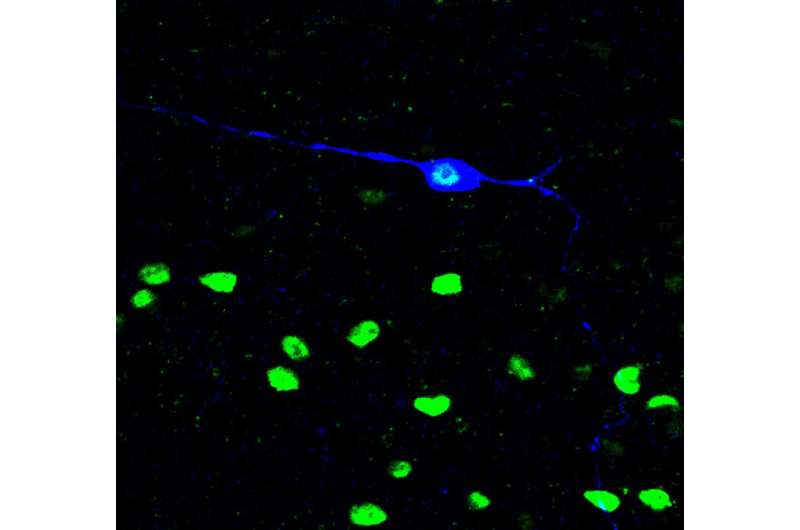This article has been reviewed according to Science X's editorial process and policies. Editors have highlighted the following attributes while ensuring the content's credibility:
fact-checked
peer-reviewed publication
trusted source
proofread
Not all itches are the same, according to the brain

Itch is a protective signal that animals use to prevent parasites from introducing potentially hazardous pathogens into the body. If a mosquito lands on a person's arm, they sense its presence on their skin and quickly scratch the spot to remove it. Itchiness due to something like a crawling insect is known as "mechanical" and is distinct from "chemical" itchiness generated by an irritant such as the mosquito's saliva if it were to bite the person's arm. While both scenarios cause the same response (scratching), recent research by Salk Institute scientists has revealed that, in mice, a dedicated brain pathway drives the mechanical sensation and is distinct from the neural pathway that encodes the chemical sensation.
Their findings, published in Neuron on April 5, 2023, show that a small population of neurons relay mechanical itch information from the spinal cord to the brain and identify the neuropeptide signals that regulate both itch types.
"This study provides fundamental insights into how these two forms of itch are encoded by the brain and opens up new avenues for therapeutic interventions for patients that suffer from a range of chronic itch conditions, including ectopic dermatitis and psoriasis," says co-corresponding author Martyn Goulding, professor and holder of the Frederick W. and Joanna J. Mitchell Chair.
The discovery builds on previous work in Goulding's lab that had identified the neurons in the spinal cord that control mechanical itch and not chemical itch. Members of Goulding's lab teamed up with co-corresponding author Sung Han, assistant professor and holder of the Pioneer Fund Developmental Chair, who had previously found that a small region of the brain serves as an alarm center that fields threat signals, both external and internal from within the body.
Han's team had noticed that a specific group of neurons were crucial for encoding threat signals. Goulding's lab then decided to focus on these neurons and ask if they play a specific role in relaying mechanical itch signals to this alarm center.
The team used genetic approaches combined with wearable miniaturized microscopes that allowed the researchers to see itch-induced activity in single neurons of mice. The scientists discovered that by removing an inhibitory pathway involved in itch, they could activate a mechanical itch. By observing subsequent activity and changes occurring in the brainstem, they saw that different cells were responding to either mechanical or chemical itch. This allowed the team to classify distinctions between a chemical itch pathway and a mechanical itch pathway and clearly identify the molecules important for regulating them.
"We found that if you sensitize one pathway, you can stimulate a pathological itch state, and vice versa," says Han. "This indicates that these two pathways act together to drive chronic itch."
Next, the scientists plan to examine where in the brain these pathways converge, and then explore the parts of the brain that receive signals that determine the decision of whether to scratch an itch. They also want to better understand how the spinal cord and brainstem differentiate between pain and itch.
"The prevalence of chronic itch increases as we age. For this reason, we would also like to understand more about what is happening to the neural circuits that relay itch as we get older," says Goulding. "Given that chronic itch is an intractable problem, our findings should help leverage the development of new therapies for treating it."
Other authors include Xiangyu Ren, Shijia Liu, Amandine Virlogeux, Sukjae J. Kang, Jeremy Brusch, and David Acton of Salk, Yuanyuan Liu of the National Institutes of Health, and Susan M. Dymecki of Harvard Medical School.
More information: Xiangyu Ren et al, Identification of an essential spinoparabrachial pathway for mechanical itch, Neuron (2023). DOI: 10.1016/j.neuron.2023.03.013

















